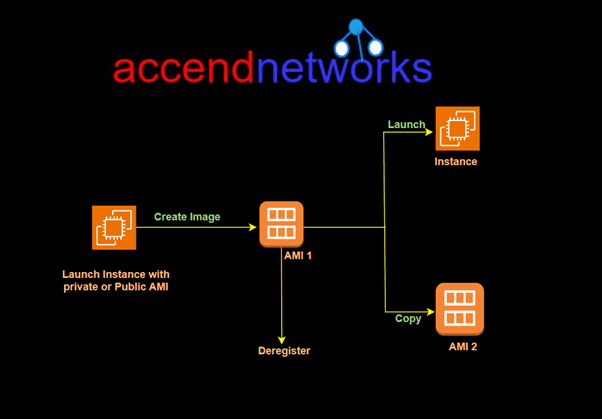As businesses continue their digital transformation and rely increasingly on cloud environments, the ability to deploy consistent, secure, and scalable infrastructure has become fundamental. Amazon Web Services (AWS), one of the leading cloud platforms, provides a critical building block for this process: the Amazon Machine Image, widely known as an AWS AMI. AMIs play a central role in how IT departments build and manage cloud-based systems, helping organizations accelerate deployments, reduce operational overhead, and maintain high levels of reliability across workloads.
What Is an AWS AMI?
An Amazon Machine Image (AMI) is a pre-configured template used to launch virtual machines—called EC2 instances—within AWS. This template contains everything needed to start a server in the cloud, including:
- An operating system (Linux, Windows Server, etc.)
- System configurations
- Optional application stacks
- Pre-installed software
- Security hardening or custom configurations
- Custom partitions or storage definitions
Think of an AMI as a “golden image” or standardized blueprint that ensures every instance launched from it is identical. This consistency is crucial when deploying multiple servers across various environments such as production, development, staging, or test environments.
AWS provides several categories of AMIs:
- AWS-provided AMIs (e.g., Amazon Linux, Ubuntu, Windows Server)
- Marketplace AMIs created and maintained by solution providers
- Community AMIs, shared by the community
- Custom AMIs, built internally by IT teams
This flexibility allows organizations to select or build images tailored exactly to their needs.
Why AMIs Matter in IT Departments
Modern IT departments operate under increasing pressure to deploy services quickly, maintain security, and ensure operational stability—often with limited staffing. AMIs directly support these goals in multiple ways.
1. Accelerated Deployment and Automation
With a pre-configured AMI, IT teams can deploy new servers in minutes rather than hours or days. This is essential for scaling applications or creating temporary environments for testing. AMIs integrate seamlessly with AWS services like Auto Scaling Groups, CloudFormation, and Terraform, enabling fully automated and repeatable infrastructure deployments.
2. Consistency Across Environments
A key challenge in traditional on-premises infrastructures is ensuring that all machines are configured the same way. Slight differences can cause application failures, security vulnerabilities, or inconsistent performance.
AMIs eliminate this problem by ensuring every launched instance is an exact replica of the original. Developers, DevOps engineers, and system administrators all benefit from predictable behavior across environments.
3. Improved Security and Compliance
Security teams often need to enforce specific configurations, patches, or compliance baselines. With custom AMIs, organizations can embed:
- The latest security patches
- Mandatory agents (antivirus, monitoring, logging)
- Hardened configurations
- Compliance frameworks (CIS Benchmarks, PCI-DSS, etc.)
By launching from a trusted AMI, IT departments avoid misconfigurations and ensure that every new instance starts in a secure state.
4. Operational Efficiency
AMIs reduce repetitive manual work. Instead of installing software and configuring servers one by one, IT engineers can create an image once and reuse it across the entire cloud environment. This lowers operational costs and frees staff to focus on higher-level initiatives.
5. Disaster Recovery and Backup
AMIs also support business continuity. They can be stored, copied to multiple AWS regions, and integrated into disaster-recovery plans. If a major failure occurs, new instances can be spun up rapidly using the stored images.
Conclusion
AWS AMIs are more than simple templates—they are foundational tools that help IT departments build scalable, secure, and efficient cloud infrastructures. Whether launching a single EC2 instance or automating the deployment of an entire application stack, AMIs ensure consistency, accelerate operations, and enhance reliability across the organization. As cloud adoption continues to grow, the strategic use of AMIs becomes a core competency for any IT team aiming to deliver modern, high-performing digital services.































